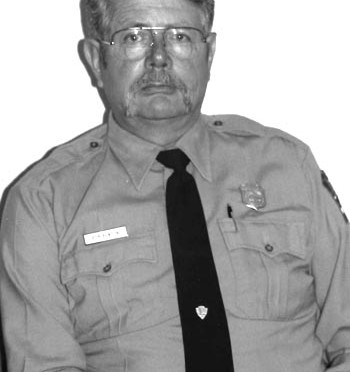That was after he had been regional director?
Yes. There were a lot of folks, but those two kind of stand out as contributing things that I felt that I could use and, in fact, did. When they reorganized the Washington office section, I ended up over with Wilderness Studies. I didn’t particularly like that. Hartzog was one of the people that thought the Wilderness Act as related to the National Park Service was kind of stupid. He didn’t think it was right. But the decisions and the way that the wilderness studies went forward were pretty grim. As a result, we never did get out of the Wilderness Act what might have aided the parks a lot. Well-meaning people are always trying to lay an extra layer of bureaucracy in a park. A classic example might be Crater Lake. Crater Lake’s Organic Act is totally adequate to protect the resources of Crater Lake if the superintendent’s got any guts. They can protect that park. All they need to do is to be able to have enough guts to make it happen. Yet, there was a desire to put some wilderness on top of Crater Lake because it would give it an extra layer of protection. What a bunch of bullshit! You don’t need that extra layer of protection. Okay, that was Hartzog. More recently, in addition to the wilderness area recommendations for Crater Lake, is this nonsense about having a research natural area designation on top of the wilderness area on top of the park area! That was a big thing for a while when I was at Crater Lake. My reaction to that is that no, no we are not going to! There were all kinds of threats made against me and all kinds of stuff. And I said it is not going to happen. You are not going to put that extra layer on here because to do so you are preventing the National Park Service and the superintendent from properly administering that area. You are putting road blocks in that aren’t necessary. If the superintendent isn’t protecting Crater Lake, change superintendents. But don’t be laying another layer of crap on there. Each time you do that, you may lose a modem of control that you need in order to manage effectively the park.
Were some of the wilderness studies and plans complicated by new public involvement procedures that Hartzog put in place?
Absolutely not. I don’t think so. It was mostly a lot time to buy votes and do this and get people to sign up. As an example, they had these clever little ideas called enclaves. You had this big map of wilderness and then you’d have an enclave of development out in the middle of the wilderness. That might be the Sperry Chalet in Glacier. That might be an enclave. If it’s a wilderness area and it’s got a Sperry Chalet in there, that is such an insignificant spot of mankind as not even to be important. Forget it. So it’s there. Just accept the fact that it’s there. Don’t let it expand. But don’t worry about it. Look at the big picture. But they got all excited about this enclave nonsense because that was going to be a big deal. As an example, we lost some very neat historical stuff at Crater Lake due to this crazy enclave thing. They wanted to have these enclaves, and they looked around and whoever was worrying about Crater Lake at the regional or park level, got all worried that Crater Lake had to have all these enclaves where the backcountry patrol cabins are. So they burned them all down. Tore them down or burned them or both. All seven of those backcountry cabins were deliberately destroyed, not because it was ever thought out whether they needed to be destroyed or didn’t need to be destroyed, but they wanted to get rid of them so we wouldn’t have those evil enclaves at Crater Lake (6). How crazy can you get. They were there. I don’t know whether they were good or bad. I’m sure they probably varied some. But we lost them all. We lost a little bit of Crater Lake history that should never have been lost due to this big fear of enclaves.


